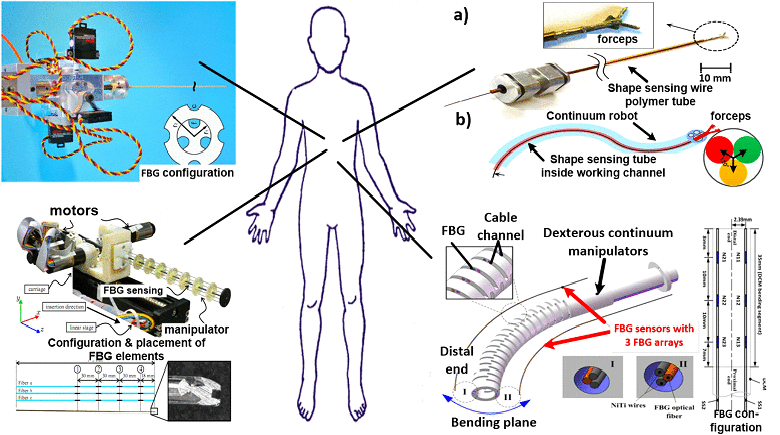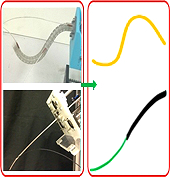
Continuum robots provide inherent structural compliance with high dexterity to access the surgical target sites along tortuous anatomical paths under constrained environments, and enable to perform complex and delicate operations through small incisions in minimally invasive surgery (MIS). These advantages enable their broad applications with minimal trauma, and make challenging clinical procedures possible with miniaturized instrumentation and high curvilinear access capabilities. However, their inherent deformable designs make it difficult to realize three-dimensional (3D) intraoperative real-time shape sensing to accurately model their shape. Solutions to this limitation can lead themselves to further develop closely associated techniques of closed-loop control, path planning, human–robot interaction and surgical manipulation safety concerns in minimally invasive surgery (MIS).
Shape sensing techniques have been emerging and beneficially employed in continuum robots used in MIS, including the extended concept of pseudo-continuum robots that employ discrete-link or discrete-joint structures to closely resemble continuum robots. Despite the extensive model-based research centered on kinematics and mechanics, other emerging and alternative techniques for shape reconstruction together with tip localization have been recently proposed. This review presents the technical advances and recent progress enabled by shape reconstruction techniques on the generalized continuum robots through the utilization of fiber Bragg gratings (FBG) sensing, electromagnetic (EM) tracking and intraoperative imaging, in addition to state-of-the-art applications. These techniques have different strengths and drawbacks, but generally enable real-time shape estimation and tip localization with reasonable accuracy. Some implementations have been applied for continuum robots as real-time feedback information to realize closed-loop control and path planning. Despite the significant progress made on shape sensing, a general framework remains to be developed to accurately and robustly reconstruct different shapes of surgical continuum robots and achieve seamless integration into the current clinical workflows.

